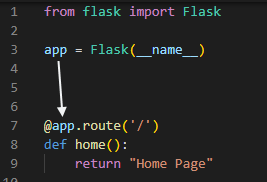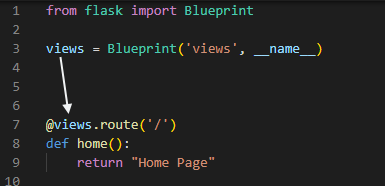Flask - Creating endpoints using Routes


by
Jeremy Canfield |
Updated: February 25 2024
| Flask articles
A route is how Flask defines the endpoint pages for your app.
Flask uses the MVC (Model View Controller) Framework. Just to make this as obvious as possible, I like my Flask apps to have the following.
- Model -> models.py
- View -> views.py
- Controller -> __init__.py
Let's say your Flask app has the following files.
├── main.py
├── my-project (directory)
│ ├── __init__.py
│ ├── views.py
│ ├── templates (directory)
│ │ ├── base.html
│ │ ├── home.html
│ │ ├── results.html
│ └── static (directory)
│ └── custom.css
For example, let's say your view (views.py in this example) has the following, which creates two pages, the default / (Home) page and the /Test page.
from flask import Blueprint, render_template
@app.route("/")
def home():
return render_template('home.html')
@app.route("/Test")
def test():
return render_template('test.html')
Navigating to http://<hostname or IP address>/ should return home.html.

Navigating to http://<hostname or IP address>/Test should return test.html.

Whatever routes must use the same keyword that you set for Flask(__name__).

Or if using Blueprint, the same keyword that was set for Blueprint(__name__).

Did you find this article helpful?
If so, consider buying me a coffee over at 